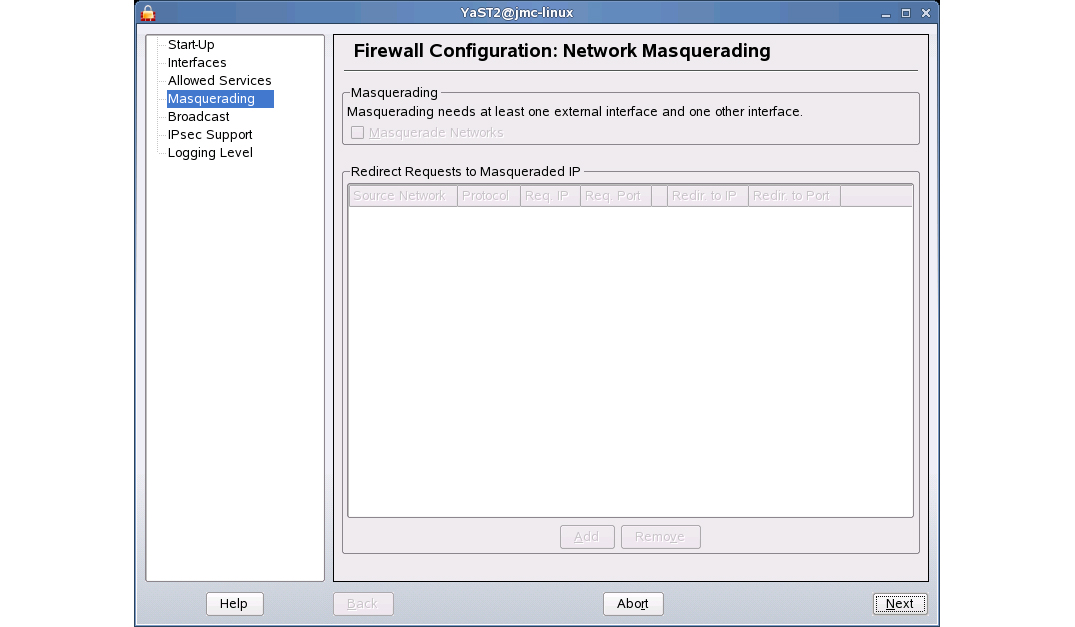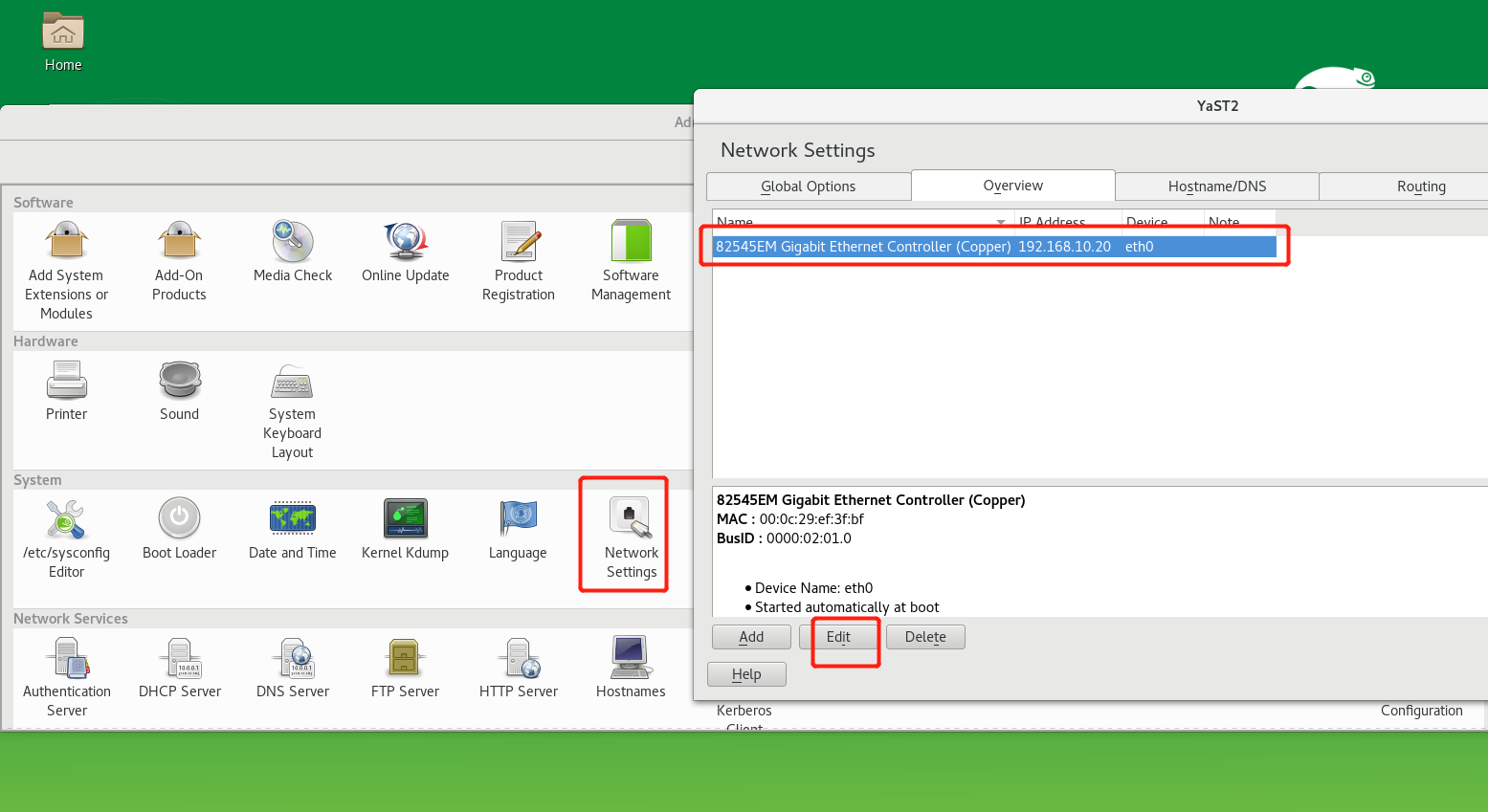

A binary running as an LXC guest is actually running as a normal process directly in the host os kernel just like any other process. It offers essentially native performance.
#OPENSUSE ROUTE GATEWAY FULL#
#OPENSUSE ROUTE GATEWAY INSTALL#
For example, to remove the current setting for the default gateway so that you can specify a new route, use route del default gw.The main content of this document for the most part applies only to LXC up to 12.3.įor the new implementation and integration with libvirt in LEAP and 13.2,įollow the install steps posted in the Technical Help Forms You can do this with the route del command. If you need to change the default gateway, you should be aware that you have to remove the old route first. To do this on SUSE Linux Enterprise Server, first install the quagga package, and next use insserc bgpd to activate dynamic routing. The task of such a routing daemon is to exchange information with other routers and in that way make sure routing tables are automatically filled with the right entries. If it is a part of a complex network where several routers communicate with each other, you can also install a routing daemon. Note In most cases, you will just use a simple static route on your Linux server. For example, if you want to specify that the router with IP address 192.168.1.254 should be used as the default gateway, use the command route add default gw 192.168.1.254. All the other information is added automatically. To specify a route, the minimum you need to specify is which network you want to add an entry to and which router is used as a gateway. Finally, the Iface column tells you what network interface is used to route packets. The last column is Use, which indicates the amount of lookups appearing for this route. The Ref column isn't used in the Linux kernel. Since in this example all networks are connected directly, you can see the metric 0 in all columns. Next, the Metric parameter defines the distance for a given network. Dynamic routing is outside the scope of this chapter. Other flags do exist but are applied only if a dynamic routing protocol is used. For the default gateway, you'll also see the flag G. Ordinarily, all routes should be flagged with a U, indicating the route is up. First the Flags parameter shows whether the route is up.

Then the Flags, Metric, Ref, and Use columns show some more detailed information. Next you see the Genmask, which is the subnet mask used on the specified destination. For external routers that are used as the destination, you will see the IP address (or name) of that router. If in the Gateway column you see a *, this means the local host is the gateway for that destination. This is the router that needs to be contacted to reach the destination specified.

The first column mentions the destination this is the network or host for which a route is defined. In the output of the route command, several columns are displayed, as shown in Figure 13-13. The route command gives an overview of all routes that are currently defined. If you don't want any name resolving to occur, use the option -n this will make the command a lot faster. When you use the route command without options, the command will always try to resolve the name for a given IP address. If no options are used with this command, it will just show you a list of all routes that currently are defined on this host you can see an example of this in Figure 13-13. The classical command to set the default route is the route command.


 0 kommentar(er)
0 kommentar(er)
